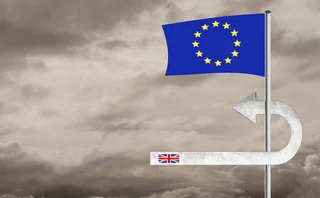
The case for levying an Eiopa 'tax'
Chair is hopeful the European Commission may address structural problem of funding the under-resourced regulator
In laying out plans for his second term in office, Gabriel Bernardino, chairman of the European Insurance and Occupational Pensions Authority (Eiopa), presents a number of laudable aims. Among his headline targets are achieving supervisory convergence, enhancing consumer protection and preserving financial stability.
Along the way, over the next five years, Eiopa will of course fulfil all the other day-to-day duties one might expect of a European supervisory authority. But in an interview with Risk.net, Bernardino admits his organisation cannot hope to cover all areas of concern – hence there is a need to prioritise.
For example, Bernardino says Eiopa will conduct an analysis of the ongoing appropriateness of insurers' internal models and elements of benchmarking, but he admits: "We don't have the resources to touch on all issues." In practice, that means the regulator will tackle the elements it considers most relevant – modelling sovereign exposures will be a focus, with an analysis due this year, to be followed by policy proposals.
Originally set up in 2011 with just 20 employees, Eiopa is now staffed by around 140 people. Charged, however, with supervising insurers and pension funds in Europe that collectively manage assets in excess of €9.2 trillion ($10.3 trillion) in the eurozone alone – according to the European Central Bank – the organisation could be described as under-resourced. Its annual budget of just under €20 million certainly does not seem excessive, given the regulator's wide remit. The same could be said of its sister bodies, the European Securities and Markets Authority and the European Banking Authority.
Eiopa is currently funded 40% from the European Commission and 60% by EU member states. Bernardino thinks this is a structural problem, to be solved by financing Eiopa's activities from the central European Union budget and/or levying insurers and pension funds. After first making such a call in 2013, he is hopeful of change – with the European Commission said to be considering the issue.
Insurers and pension funds would not rejoice at the prospect of being asked to contribute, but solving the structural problem of funding Eiopa's activities may well produce improved regulatory outcomes.
Only users who have a paid subscription or are part of a corporate subscription are able to print or copy content.
To access these options, along with all other subscription benefits, please contact info@risk.net or view our subscription options here: http://subscriptions.risk.net/subscribe
You are currently unable to print this content. Please contact info@risk.net to find out more.
You are currently unable to copy this content. Please contact info@risk.net to find out more.
Copyright Infopro Digital Limited. All rights reserved.
As outlined in our terms and conditions, https://www.infopro-digital.com/terms-and-conditions/subscriptions/ (point 2.4), printing is limited to a single copy.
If you would like to purchase additional rights please email info@risk.net
Copyright Infopro Digital Limited. All rights reserved.
You may share this content using our article tools. As outlined in our terms and conditions, https://www.infopro-digital.com/terms-and-conditions/subscriptions/ (clause 2.4), an Authorised User may only make one copy of the materials for their own personal use. You must also comply with the restrictions in clause 2.5.
If you would like to purchase additional rights please email info@risk.net
More on Insurance
The future of life insurance
As the world constantly evolves and changes, so too does the life insurance industry, which is preparing for a multitude of challenges, particularly in three areas: interest rates, regulatory mandates and technology (software, underwriting tools and…
40% of insurers fail to specify climate as a key risk – LCP
Despite regulators’ urging, many UK and Irish insurers omit climate from risk statements, says report
Libor leaders: Prudential takes SOFR for a test drive
Test trades have allowed US insurer to start getting used to a life without Libor
Fed to push ahead with capital regime for single US insurer
Prudential faces risk capital add-ons unless it sheds “systemically important” label
Brexit dims hopes for Solvency II change in UK
Lawyers say political tensions may have killed off chance of reform, following PRA U-turn
BoE creates volatility adjustment ‘stepping stone’ for insurers
Dynamic VA may be used for assets that fail to qualify for matching adjustment, say experts
No plans to scrap systemic insurer rules, says IAIS chair
A US regulator claims Europeans asked IAIS to chart own course after FSB moved to ditch G-Sii list








